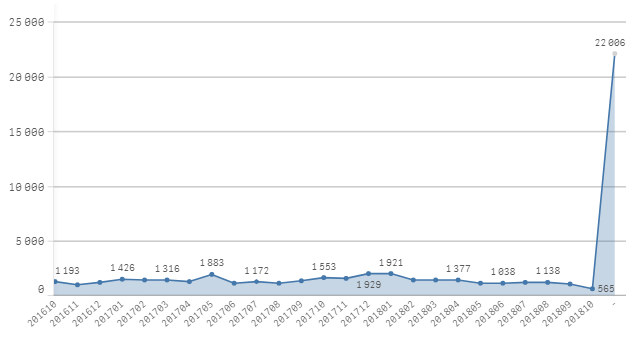Unlock a world of possibilities! Login now and discover the exclusive benefits awaiting you.
- Qlik Community
- :
- All Forums
- :
- QlikView App Dev
- :
- Understanding Join, Keep and Concatenate
- Subscribe to RSS Feed
- Mark Topic as New
- Mark Topic as Read
- Float this Topic for Current User
- Bookmark
- Subscribe
- Mute
- Printer Friendly Page
- Mark as New
- Bookmark
- Subscribe
- Mute
- Subscribe to RSS Feed
- Permalink
- Report Inappropriate Content
Understanding Join, Keep and Concatenate
We have implemented the QlikView Join, Keep and Concatenate in QvScriptor, a new revolutionary tool, able to generate QlikView script from visual schema.
We have written this small doc for the help file and we thing interesting to share it with the community as we found only partial explanations about the methods.
The QlikView script functions JOIN, KEEP and CONCATENATE can sometimes be used to solve the same problem, but there are important differences that should be understood.
Examine the sample tables below. Note that they share one common field name, "Key".
Also note that Table1 has a Key value "3" that is not present in Table2 and that Table2 has a key 4 that is not present in Table1.
| Table1 | Table2 | |||
| Key | A | Key | C | |
| 1 | A1 | 1 | C1 | |
| 2 | A2 | 2 | C2 | |
| 3 | A3 | |||
| 4 | C4 |
Type of Joins:
JOIN will combine rows where the Key value matches.
- The keyword OUTER will also retain rows that do not match rows in the other table.
- The keyword LEFT will retain rows from the left table but only matching rows from the right table
- The keyword RIGHT will retain rows from the right table but only matching rows from the left table
- The keyword INNER will retain rows matching the left table and right table
Joins
Here's what the merged table will look like after the different join methods.
Note that QlikView merge the two tables after a Join.
Note: The explicit join keyword (= Outer Join) in QlikView script language performs a full join of the two tables. The result is one table. In many cases such joins will result in very large tables. One of the main features of QlikView is its ability to make associations between tables instead of joining them, which greatly reduces memory usage, increases processing speed and offers enormous flexibility. Explicit joins should therefore be generally avoided in QlikView scripts. The keep functionality was designed to reduce the number of cases where you need to use explicit joins
| OUTER JOIN (Table1) | LEFT JOIN (Table1) | ||||||
| Key | A | C | Key | A | C | ||
| 1 | A1 | C1 | 1 | A1 | C1 | ||
| 2 | A2 | C2 | 2 | A2 | C2 | ||
| 3 | A3 | - | 3 | A3 | - | ||
| 4 | - | C4 | |||||
| RIGHT JOIN (Table1) | INNER JOIN (Table1) | |||||
| Key | A | C | Key | A | C | |
| 1 | A1 | C1 | 1 | A1 | C1 | |
| 2 | A2 | C2 | 2 | A2 | C2 | |
| 4 | - | C4 | ||||
Keep
The keep prefix between two load or select statements has the effect of reducing one or both of the two tables before they are stored in QlikView, based on the intersection of table data. The keep keyword must always be preceded by one of the prefixes inner,left or right. The selection of records from the tables is made in the same way as in a corresponding join.
However, the two tables are not joined and will be stored in QlikView as two separately named tables.
| LEFT KEEP | ||||
| Table1 | Table2 | |||
| Key | A | Key | C | |
| 1 | A1 | 1 | C1 | |
| 2 | A2 | 2 | C2 | |
| 3 | A3 | 3 | - | |
| RIGHT KEEP | ||||
| Table1 | Table2 | |||
| Key | A | Key | C | |
| 1 | A1 | 1 | C1 | |
| 2 | A2 | 2 | C2 | |
| 4 | - | 4 | C4 | |
| INNER KEEP | ||||
| Table1 | Table2 | |||
| Key | A | Key | C | |
| 1 | A1 | 1 | C1 | |
| 2 | A2 | 2 | C2 | |
Concatenate
Now let's look at Concatenate. Concatenate appends the rows of one table to another. Concatenate never merges any rows. The number of rows in a concatenated table is always the sum of the rows from the two input tables. Here's what our sample data will look like after Concatenate.
CONCATENATE (Table1) LOAD * RESIDENT Table2;
| Key | A | C |
| 1 | A1 | |
| 1 | C1 | |
| 2 | A2 | |
| 2 | C2 | |
| 3 | A3 | |
| 4 | C4 |
Rows with like Key values are not merged together. The rows from Table2 are simply appended to Table1. Because the tables have different fields, rows will have null values for the fields from the "other" table.
QsGen Team
- « Previous Replies
- Next Replies »
- Mark as New
- Bookmark
- Subscribe
- Mute
- Subscribe to RSS Feed
- Permalink
- Report Inappropriate Content
Hi j.denard
Nice post if possible answer to my post
I want to concatenate fact and fact 1 tables
Regards,
Joshua.
- Mark as New
- Bookmark
- Subscribe
- Mute
- Subscribe to RSS Feed
- Permalink
- Report Inappropriate Content
Great explanation for beginners. Thank you.
Regards,
Ambareesh J
- Mark as New
- Bookmark
- Subscribe
- Mute
- Subscribe to RSS Feed
- Permalink
- Report Inappropriate Content
Looks so simple and getting idea ...
- Mark as New
- Bookmark
- Subscribe
- Mute
- Subscribe to RSS Feed
- Permalink
- Report Inappropriate Content
Simple & grate explanation.
- Mark as New
- Bookmark
- Subscribe
- Mute
- Subscribe to RSS Feed
- Permalink
- Report Inappropriate Content
thanks well explain..!
- Mark as New
- Bookmark
- Subscribe
- Mute
- Subscribe to RSS Feed
- Permalink
- Report Inappropriate Content
Excelente Artículo.
- Mark as New
- Bookmark
- Subscribe
- Mute
- Subscribe to RSS Feed
- Permalink
- Report Inappropriate Content
Hi Denard,
Thanks for your great explanation.
Regards,
Masthan
- Mark as New
- Bookmark
- Subscribe
- Mute
- Subscribe to RSS Feed
- Permalink
- Report Inappropriate Content
Hi,
I was wondering if you are able to comment on the relative performance of these operations. I have been told that since 12.10, there is a significant performance difference between JOIN and KEEP, especially for wide tables.
Thanks
Alistair
- Mark as New
- Bookmark
- Subscribe
- Mute
- Subscribe to RSS Feed
- Permalink
- Report Inappropriate Content
Hello, Comment on CONCATENATE;
"Rows with like Key values are not merged together. The rows from Table2 are simply appended to Table1. Because the tables have different fields, rows will have null values for the fields from the "other" table."
How to disregard all the NULL values in pivot or graphs so they dont affect the lay-out or expressions/calculation used in QlikSense? Is there a "quick fix" in the coding or expressions to be used?
Example attached.
expression used is : =YEAR (order_date) & Month (order_date)
BR
peter
- Mark as New
- Bookmark
- Subscribe
- Mute
- Subscribe to RSS Feed
- Permalink
- Report Inappropriate Content
Guys,
I've been using your article (much nicer than the one in Help) hundreds of times showing the comparison to my Clients asking about the difference but I have just found that it's not correct 😄 In both scenarios LEFT KEEP and RIGHT KEEP we should only have Key values 1 and 2 left though...
- « Previous Replies
- Next Replies »

